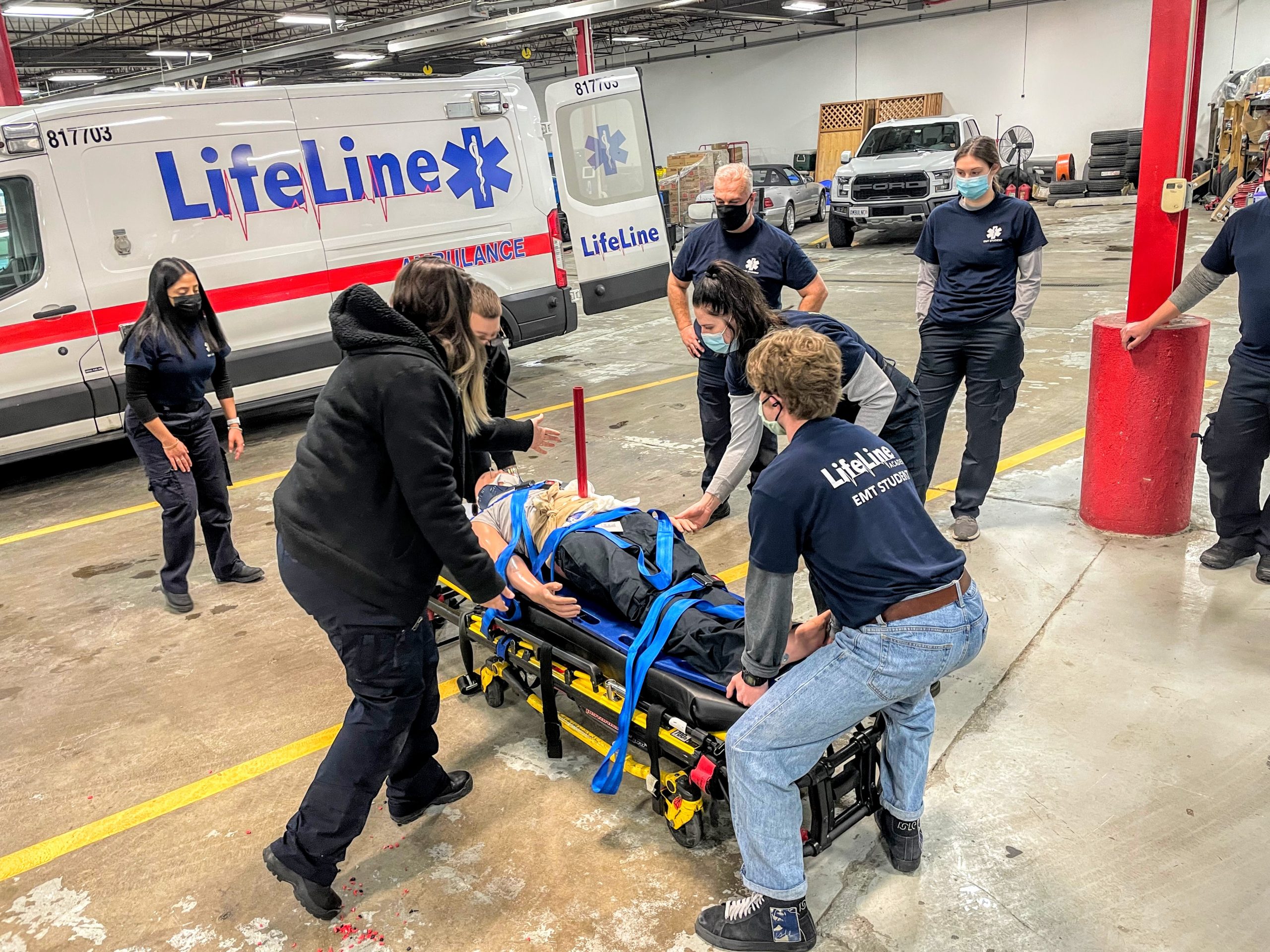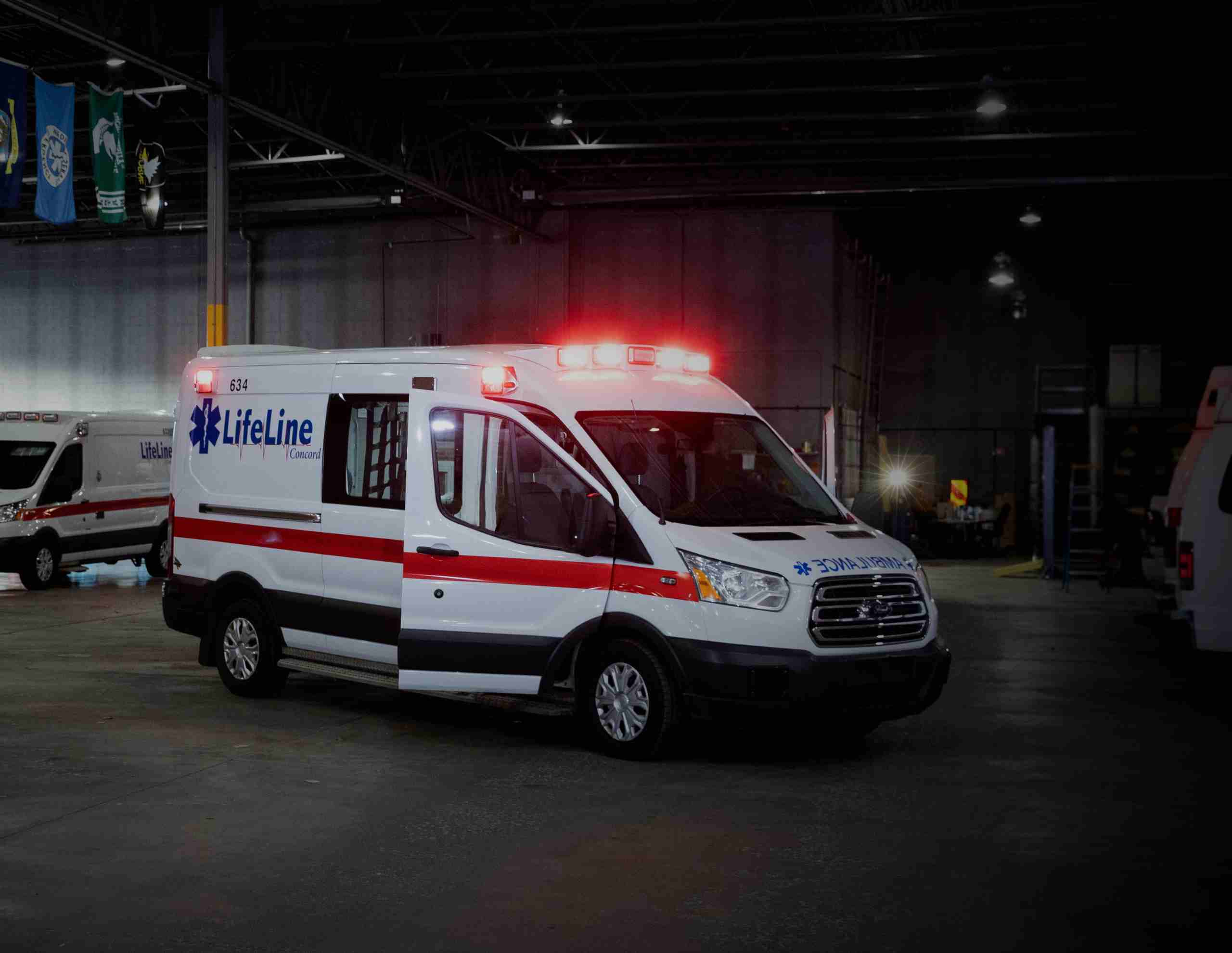
Illinois EMT Training Program
Find out more about LifeLine’s Illinois EMT Training Program.
The Different Levels of EMTs
Most people know that if they call 9-1-1, a medical professional, most commonly a Paramedic, will show up. What the general population does NOT know is how many different levels of EMTs (Emergency Medical Technicians) providers there are.
This article will discuss the four most common different EMT levels, give information on each, and discuss the training required to become an EMS professional. This article will also discuss national averages on pay scale(s) for each of the EMT certification levels.
It should be noted that while the National Highway Traffic Safety Administration (NHTSA) regulates EMS in the United States, a wide variety of state, local, city, and county protocols, laws, and healthcare initiatives can also play a role in EMS services. While national standardization for each of the 4 levels of EMS does exist, and specific scope of practice can vary greatly. This can vary even further when these EMS professionals work in the hospital setting.
The 4 Levels of EMT Training and Licensure are:
1. Emergency Medical Responder (EMR)
- Role: Entry-level responders providing basic medical care in emergency situations until advanced medical personnel arrive.
- Skills: Basic life support (BLS), controlling bleeding, managing airways, providing oxygen, treating shock, CPR, and using an AED.
- Training: Typically 40-80 hours, including classroom and hands-on training, and clinical hours in a hospital or ambulance setting.
- Certification: Requires passing a certification exam.
2. Emergency Medical Technician – Basic (EMT-B)
- Role: Provides more advanced medical care than EMRs, including patient assessment and transportation.
- Skills: All EMR skills plus medication administration, airway management, and treatments for specific medical emergencies.
- Training: Typically 120-150 hours, with additional clinical hours in hospital and ambulance settings.
- Certification: Requires passing a certification exam.
3. Advanced Emergency Medical Technician (AEMT)
- Role: Provides advanced life support (ALS) beyond the EMT-B level.
- Skills: All EMT-B skills plus advanced airway management, intravenous (IV) therapy, and administering additional medications.
- Training: Typically 200-300 hours, with additional clinical hours in hospital and ambulance settings.
- Certification: Requires passing a certification exam.
4. Emergency Medical Technician – Paramedic (EMT-P)
- Role: Highest level of EMS providers, responsible for providing advanced medical care, including ALS skills and invasive procedures.
- Skills: All AEMT skills plus advanced cardiac life support (ACLS), advanced pediatric life support (PALS), critical care transport, and performing procedures like chest tube insertion and intubation.
- Training: Typically 1,000-1,500 hours, often in the form of a two-year program, with extensive classroom instruction, hands-on training, and clinical experience.
- Certification: Requires passing a certification exam.

EMS Certification Fun Fact
As of May 2024, from EMR to Paramedic, there are over 470,000 certified EMS professionals in the United States.
Here is the breakdown of common EMT ranks:
- EMR: 15,631
- EMT: 307,501
- AEMT: 23,420
- Paramedic: 125,320
Grand Total of all EMT Types: 471,872
Source: The National Registry Data Dashboard. 2024, May 2. In The National Registry. Retrieved 02 May 2024, from https://www.nremt.org/maps
The Different Types of EMTs each have a Unique Level of Pay, Training and Skill Set
Skills Required for Each of the 4 EMT Certification Levels
First, let’s start with a basic explanation of EMS professionals. These providers play a critical role in providing pre-hospital care for patients in emergency and non-emergency scenarios. EMS is typically composed of a team of medical professionals with varying levels of experience, training and licensure.
Emergency Medical Responder (EMR)
EMRs are trained in basic life support (BLS) skills such as controlling bleeding, managing airways, providing oxygen, and treating shock. They can also provide basic cardiopulmonary resuscitation (CPR) and defibrillation using an automated external defibrillator (AED). EMRs do not have the training or authority to administer medications or perform advanced medical procedures.
Emergency Medical Technician – Basic (EMT-B)
EMT-Bs are the next level of EMS provider and have more training than EMRs. EMT-Bs are trained in all the basic skills of an EMR, plus additional skills like medication administration, airway management, and treatments for specific medical emergencies.
They can administer basic medications such as epinephrine for severe allergic reactions or aspirin for chest pain. They can also perform more advanced airway management techniques such as using a bag-valve mask device to assist with breathing. EMT-Bs also have more in depth training on specific medical emergencies like heart attacks, strokes, diabetic emergencies, and traumatic bone fractures or dislocations.
Advanced Emergency Medical Technician (AEMT)
AEMTs are the next level of EMS provider and have more training than EMT-Bs. AEMTs are trained in all the skills of an EMT-B, plus additional skills such as advanced airway management, intravenous (IV) therapy, and administering additional medications.
AEMTs can provide both BLS and advanced life support (ALS) care. They can administer medications such as nitroglycerin for chest pain, albuterol for asthma, and naloxone for opioid overdoses. AEMTs can also perform advanced airway management techniques such as intubation and can insert intravenous catheters to administer fluids and medications.
Emergency Medical Technician – Paramedic (EMT-P)
Paramedics are the final and highest level of EMS providers as they have the most training and experience. Paramedics are trained in all the skills of an AEMT, plus additional skills such as advanced cardiac life support (ACLS), advanced pediatric life support (PALS), and critical care transport.
Paramedics can provide BLS and ALS care and can administer a wide range of medications such as cardiac medications, pain relievers, sedatives, and anti-seizure medications. They are also trained to perform advanced medical procedures such as chest tube insertion, cricothyrotomy, and intraosseous (IO) access.
Paramedics are also trained to manage critical emergencies such as cardiac arrest, respiratory failure, and trauma emergencies. They are often called upon to respond to high-acuity emergencies such as motor vehicle accidents, cardiac arrests (when a person’s heart stops), gunshot or stabbing victims, fall victims, other traumatic injuries (such as chainsaw, lawnmower, farming equipment, etc.), fractures (broken bones), psychiatric emergencies (bipolar events, suicidal attempts, etc.) and burn victims.
Paramedics are the most advanced EMS providers and can treat nearly all emergent situations. In most cases, they are the highest trained medical professional on an emergency scene, which also renders them in charge of all other medical personnel.
Paramedics are also required to communicate with hospitals giving reports on the patients they are transporting. Thus, in addition to advanced medical training, paramedics are trained in communication and leadership skills.
There are also different levels of paramedic (EMT-P) specialties with additional paramedic levels including critical care paramedic, flight paramedic and tactical paramedic, which are among the highest level of paramedic training.
Training Required for Each of the 4 EMT Certification Levels
The four previously discussed EMS professionals each have varying levels of training required. For each level, didactic coursework (in the classroom), in-hospital clinical hours, and clinical hours in the field (on an ambulance) are required, with each advancement requiring more and more training. Each of the levels of EMS training builds upon the previous level, and each has specific requirements for certification and ongoing education.
Emergency Medical Responder (EMR)
EMRs are the entry level medical responders on the scene of an emergency. The purpose of their training is to be able to provide basic medical care in emergency situations and to stabilize patients until more advanced medical personnel arrive. To become an EMR, individuals must complete a training program that meets national standards. The National Emergency Medical Services Education Standards provides guidance for EMR training programs.
EMR programs typically take between 40 and 80 hours to complete. In addition to classroom and hands-on training, EMRs must complete a specified number of clinical hours in a hospital or ambulance setting. After completing the training program, individuals must pass a certification exam to become a certified EMR.
Emergency Medical Technician – Basic (EMT-B)
EMT-Bs are trained to provide more advanced medical care than EMRs. They are responsible for assessing the patient’s condition and providing BLS skills. EMT-Bs can also transport patients to medical facilities. To become an EMT-B, individuals must complete a training program that meets national standards. The National Emergency Medical Services Education Standards provides guidance for EMT-B training programs.
EMT-B programs typically take between 120 and 150 hours to complete.
In addition to classroom and hands-on training, EMT-Bs must complete a specified number of clinical hours in a hospital and on an ambulance (also referred to as field work). After completing the training program, individuals must pass a certification exam to become a certified EMT-B.
Advanced Emergency Medical Technician (AEMT)
AEMTs have an expanded scope of practice beyond that of EMT-Bs. They are trained to provide advanced life support (ALS) skills. To become an AEMT, individuals must first be certified as an EMT and have a specified amount of clinical experience. They must then complete an AEMT training program that meets national standards. The National Emergency Medical Services Education Standards provides guidance for AEMT training programs.
AEMT programs typically take between 200 and 300 hours to complete. In addition to classroom and hands-on training, AEMTs must complete a specified number of clinical hours in a hospital or ambulance setting. After completing the training program, individuals must pass a certification exam to become a certified AEMT.
Emergency Medical Technician – Paramedic (EMT-P)
Paramedics are the most highly trained emergency medical personnel. They are responsible for providing ALS skills such as advanced medication administration, advanced airway management, and performing advanced diagnostic procedures. Paramedics can also perform certain invasive procedures such as chest tube insertion and intubation.
To become a paramedic, individuals must first be certified as an EMT-B and have a specified amount of clinical experience. They must then complete a paramedic training program that meets national standards. The National Emergency Medical Services Education Standards provides guidance for paramedic training programs.
Paramedic programs typically take between 1,000 and 1,500 hours to complete and include extensive classroom instruction, hands-on training, and clinical experience in hospital and ambulance settings. These programs are often at least two years in length, and some come with an associate degree while others are just certificate programs. After completing the training program, individuals must pass a certification exam to become a certified paramedic.
In addition to initial training and certification, all EMS levels must complete ongoing education, also called continuing education, to maintain their certification and stay current with changes in the field. Continuing education requirements vary by state and certification level, but typically require a certain number of hours of training every two to three years.
Pay for Each of the 4 Different EMT Levels
Pay for each of the above can vary greatly from state-to-state. Even EMS professionals in the same state and city can make different pay as every EMS service, fire department, or hospital all have differing ranges.
- For EMRs, being the most entry level of EMS providers, this pay can vary greatly as fire departments may require all fire specialists to receive EMR training, but the fire department pays them for working mainly in fire suppression. However, the national average for EMR is in the low to mid $30k range yearly.
- For EMT-Bs, the national average ranges from $35,000 – $41,000 annually. The national average for hourly pay for EMT-Bs is $18 per hour.
- For AEMTs, the national average ranges from $32,811 – $50,413 annually. The national hourly average for AEMTs is similar to the EMT-B hourly at around $17-19 per hour.
- For paramedics, the national average ranges from $45,000 – $55,000 annually. The national average for the hourly rate of paramedics start in the $20s per hour range. See a breakdown by state.



Recent Comments